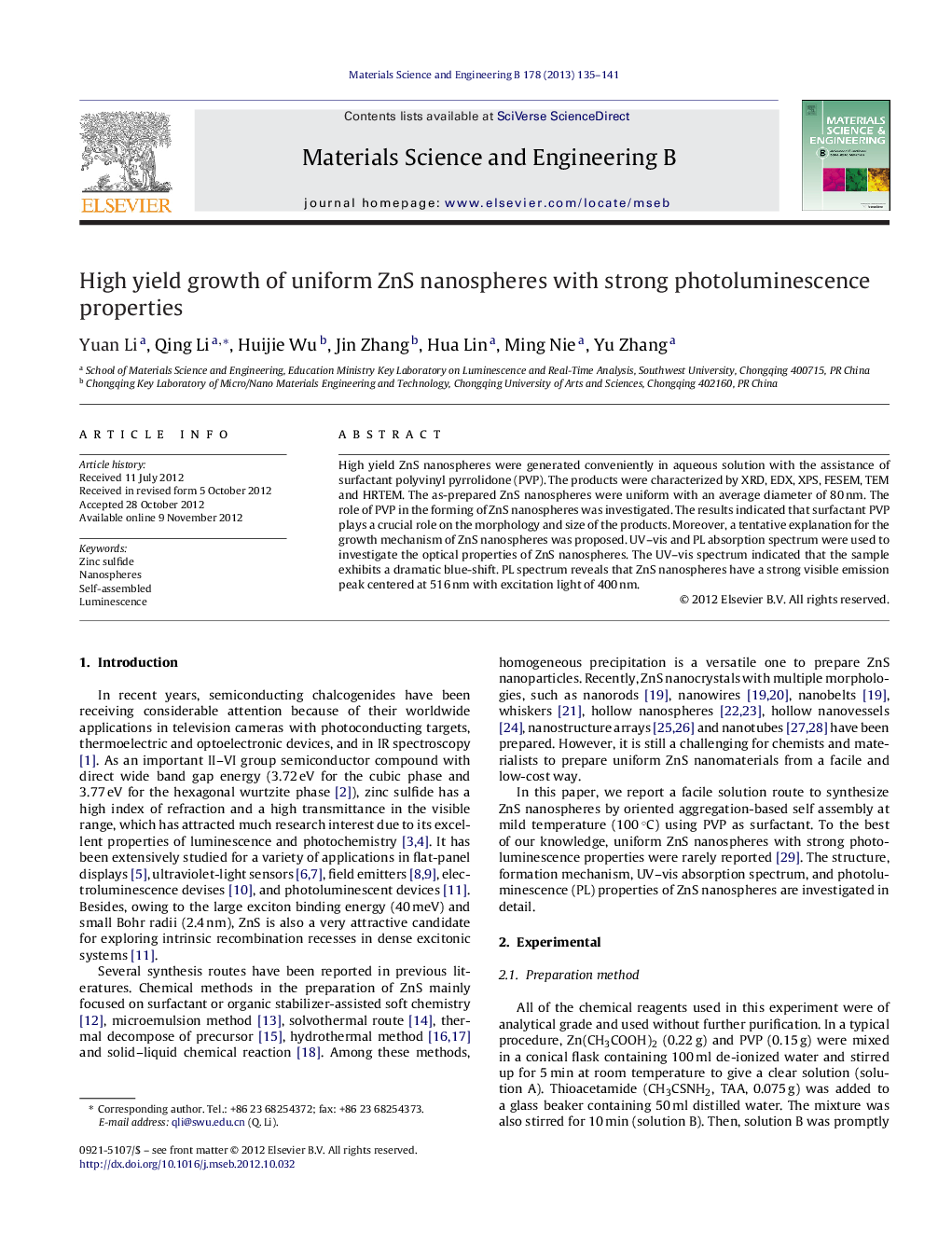| Article ID | Journal | Published Year | Pages | File Type |
|---|---|---|---|---|
| 1529248 | Materials Science and Engineering: B | 2013 | 7 Pages |
High yield ZnS nanospheres were generated conveniently in aqueous solution with the assistance of surfactant polyvinyl pyrrolidone (PVP). The products were characterized by XRD, EDX, XPS, FESEM, TEM and HRTEM. The as-prepared ZnS nanospheres were uniform with an average diameter of 80 nm. The role of PVP in the forming of ZnS nanospheres was investigated. The results indicated that surfactant PVP plays a crucial role on the morphology and size of the products. Moreover, a tentative explanation for the growth mechanism of ZnS nanospheres was proposed. UV–vis and PL absorption spectrum were used to investigate the optical properties of ZnS nanospheres. The UV–vis spectrum indicated that the sample exhibits a dramatic blue-shift. PL spectrum reveals that ZnS nanospheres have a strong visible emission peak centered at 516 nm with excitation light of 400 nm.
Graphical abstractHigh-yield ZnS nanospheres with an average diameter of 80 nm were fabricated successfully in aqueous solution at 100 °C by the assistance of surfactant PVP. It was found that PVP plays a crucial role in the formation of uniform ZnS nanospheres. A possible self-assembling growth mechanism was proposed. The UV–vis spectrum indicates that the as-prepared ZnS nanospheres exhibit a dramatic blue-shift. PL spectrum reveals that the ZnS nanospheres have a strong visible emission peak centered at 516 nm with excitation light of 400 nm.Figure optionsDownload full-size imageDownload as PowerPoint slideHighlights► High-yield ZnS nanospheres were generated conveniently in aqueous solution. ► The amount of surfactant PVP plays a crucial role on the morphology and size of the products. ► A tentative explanation for the growth mechanism of ZnS nanospheres was proposed. ► The UV–vis spectrum indicated that the sample exhibits a dramatic blue-shift. ► PL spectrum reveals that ZnS nanospheres have a strong visible emission peak centered at 516 nm with excitation light of 400 nm.
